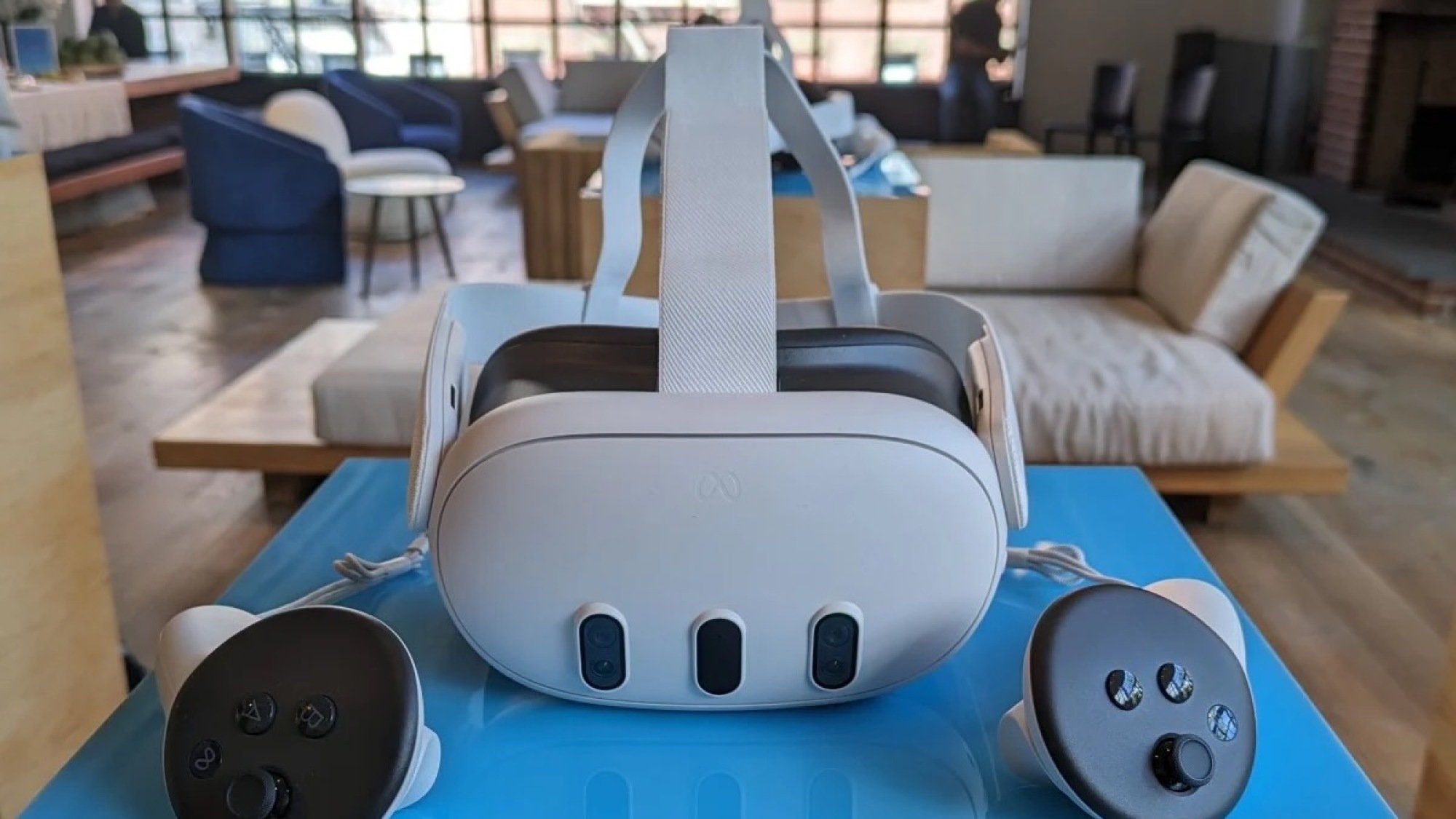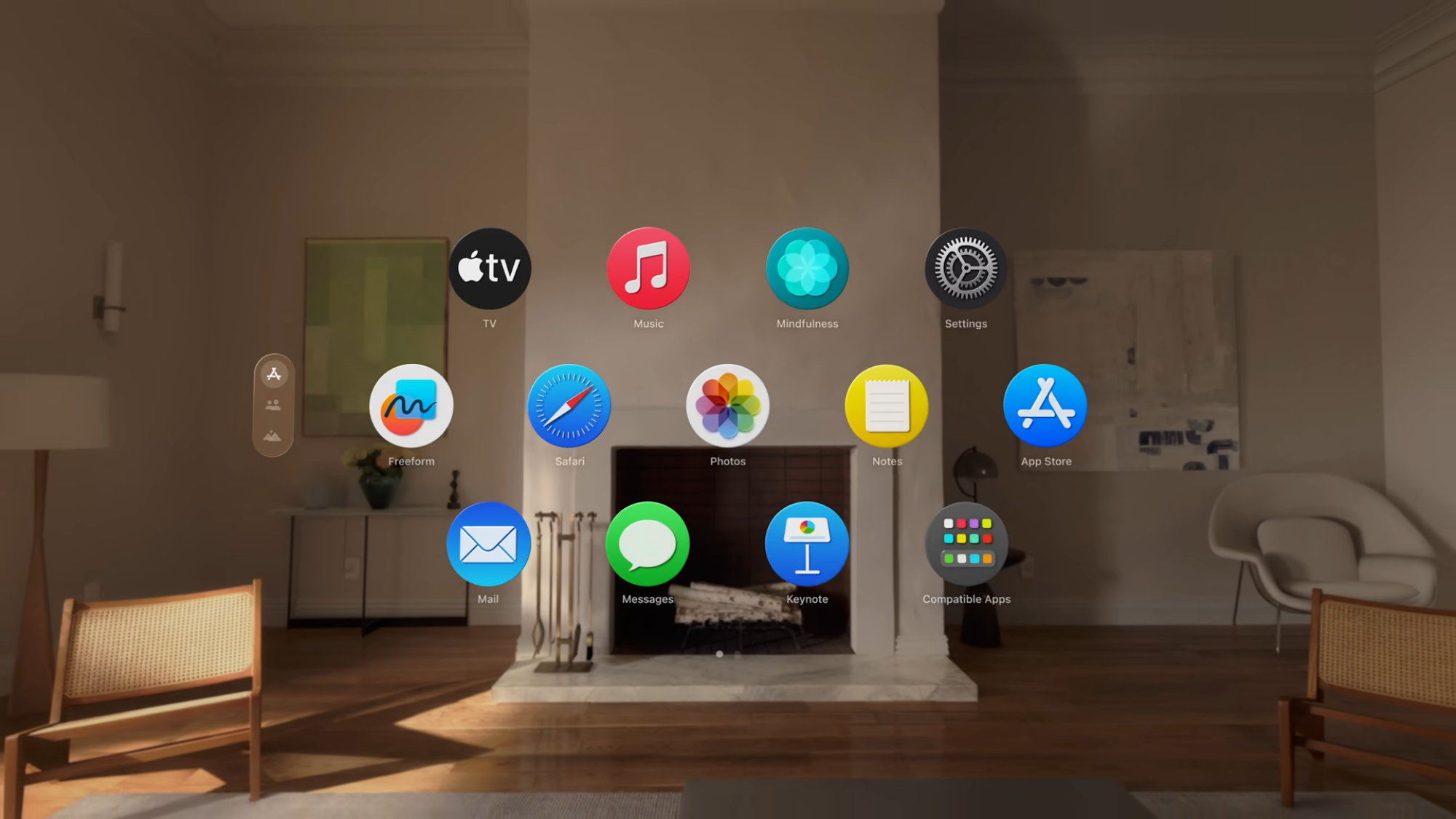Virtual reality headsets have gotten increasingly popular over the past few years. Sony’s PlayStation VR and VR2, along with the just-launched Samsung Galaxy XR, and the revamped Apple Vision Pro are some examples. These tech giants join Meta in the virtual reality fray, giving us true competition in the AR/VR space for the first time.
Yesterday, Valve announced that it’s also creating a brand new virtual reality headset, the Steam Frame, which is a follow-up to the 2019 Valve Index headset. (Valve also announced a ton more Steam hardware.) It’s built to be a streaming-first experience that is compatible with your entire Steam library, whether your games are VR or non-VR. But how does it stack up with other headsets? Let’s take a look.
SEE ALSO:
Valve announces new Steam Machine console: Price, specs, release date
Steam Frame vs. Vision Pro vs. Quest 3: Just the specs

Meta Quest 3 VR headset with controllers.
Credit: Alex Perry / Mashable
Before we compare these headsets in more detail, let’s review the specifications for each. If you don’t care about how much storage or RAM each headset has, just keep scrolling.
Recommended deals for you
Apple AirPods Pro 3 Noise Cancelling Heart Rate Wireless Earbuds
—
$219.99
(List Price $249.00)
Apple iPad 11″ 128GB Wi-Fi Retina Tablet (Blue, 2025 Release)
—
$279.00
(List Price $349.00)
Amazon Fire HD 10 32GB Tablet (2023 Release, Black)
—
$69.99
(List Price $139.99)
Sony WH-1000XM5 Wireless Noise Canceling Headphones
—
$248.00
(List Price $399.99)
Blink Outdoor 4 1080p Security Camera (5-Pack)
—
$159.99
(List Price $399.99)
Fire TV Stick 4K Streaming Device With Remote (2023 Model)
—
$24.99
(List Price $49.99)
Bose Quiet Comfort Ultra Wireless Noise Cancelling Headphones
—
$298.00
(List Price $429.00)
Shark AV2511AE AI Robot Vacuum With XL Self-Empty Base
—
$249.99
(List Price $599.00)
Apple Watch Series 11 (GPS, 42mm, S/M Black Sport Band)
—
$349.00
(List Price $399.00)
WD Elements 14TB Desktop External USB 3.0 Hard Drive
—
$169.99
(List Price $279.99)
You’ll have to wait until 2026 to get your hands (and face) on the Steam Frame. For now, we can only geek out over the specs:
Processor: 4 nm Snapdragon® 8 Gen 3, Architecture: ARM64
RAM: 16GB Unified LPDDR5X RAM
Storage: 256GB / 1TB UFS storage options, microSD card slot
Resolution: 2160 x 2160 (per eye)
Refresh Rate: 72-144Hz refresh rate (144Hz experimental)
Battery Capacity: 21.6Wh
Field of View: Up to 110 degrees
Eyetracking included: Yes
Price: TBA
Apple just released its new Vision Pro headset in October. It’s largely the same headset as the original released in 2023, but now powered by M5 silicon. Here are all the details:
Mashable Light Speed
Processor: Apple M5 chip
RAM: 16G
Storage: 256GB, 512GB, 1TB
Resolution: 3,660 × 3,200 (per-eye)
Refresh Rate: 90Hz, 96Hz, 100Hz, 120Hz
Battery Capacity: Up to 2.5 hours of general use, video playback up to 3 hours
Field of View: ~100 degrees
Eyetracking included: Yes
Price: $3,499
And here are the Meta Quest 3’s specs:
Processor: Snapdragon XR2 Gen 2
RAM: 8GB
Storage: 512GB
Resolution: 2064 x 2208 (per eye)
Refresh Rate: 72Hz, 90Hz, 120Hz
Battery Capacity: 19.44Wh
Field of View: 110 degrees horizontal and 96 degrees vertical
Eyetracking included: No
Price: $499.99
Which is best for gaming?
On the gaming side of things, the Steam Frame is going to have a huge advantage over the competition, as Valve promises you’ll be able to play your entire Steam library. With Meta Quest 3 and Apple Vision Pro, you can only play games that were specifically designed or ported to that platform. While the Quest 3 has a decent selection of titles, the Vision Pro really wasn’t designed for gaming, and its library reflects that fact.
On top of that, the Steam Frame will be compatible with other Steam hardware, including the Steam Machine, Deck, and controller, making it a much more versatile headset than the others.
AR and VR: What’s the difference?
With virtual reality, you can disappear into fully realized virtual worlds. With augmented reality, you can still see and interact with the world around you. Where it gets messy is that AR headsets like the Vision Pro also support VR experiences, so it’s not a clean distinction. Based on what we know, the Steam Frame is very much in the VR category.

An augmented reality scene with the Vision Pro.
Credit: Apple
The Steam Frame only contains monochrome passthrough cameras, while the Apple Vision Pro and Meta Quest 3 have colored passthroughs. This means that the Quest and Vision Pro support augmented and mixed reality, while the Steam Frame seemingly cannot. On the surface, this makes Steam Frame more of a downgrade compared to its competition, as it’s a pure virtual reality headset. However, it also has a “user accessible front expansion port,” which could be utilized to add more features in the future, including color passthroughs.
The Quest 3 still wins out on price
Valve hasn’t revealed a price for the Steam Frame, but the company is aiming to have it under $1,000, which is the price of a Valve Index headset. Meta Quest 3 still seems to be the most affordable of the three headsets, sitting at $500. Apple’s Vision Pro remains the most expensive at a whopping $3,500, but it comes with higher-cost components, a premium design, and some futuristic AR features.
The Steam Frame is set to launch sometime in early 2026.

